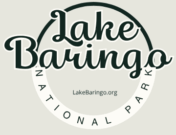Kenya’s Freshwater Wilderness in the Rift Valley
🌍 Geographical & Geological Facts
1. One of the Few Freshwater Lakes in the Rift Valley
Most Rift Valley lakes (like Nakuru, Bogoria, and Elementaita) are saline or alkaline, but Lake Baringo is freshwater—sustained by rivers like Molo, Perkerra, and Ol Arabel.
2. Volcanic Origins
Lake Baringo sits in a rift depression, flanked by the Tugen Hills and Laikipia Escarpment. The lake’s islands, like Ol Kokwe, are volcanic in origin, with visible geothermal features like hot springs and fumaroles.
3. Rising Waters Are Submerging Infrastructure
Since around 2011, Lake Baringo’s water levels have risen significantly, submerging lodges, homes, schools, and roads—displacing both people and wildlife and reshaping the shoreline.
🐦 Wildlife & Birding Facts
4. Over 470 Bird Species Recorded
Lake Baringo is one of the richest birding spots in East Africa, with residents, migrants, endemics, and rarities, including:
- Verreaux’s Eagle
- Jackson’s Hornbill
- Hemprich’s Hornbill
- Nubian Nightjar
- African Skimmer
5. You Can See Over 100 Bird Species in One Day
Birders regularly record 100+ species in a single morning, making it a dream location for ornithologists.
6. Home to the Rare Jackson’s Hornbill
This bird is near-endemic to northern Kenya and southern Ethiopia, with Lake Baringo one of the few reliable places to see it.
🐊 Wildlife & Ecosystem Facts
7. You Can Spot Hippos and Crocodiles on Boat Safaris
Baringo is one of the few lakes where hippos and Nile crocodiles coexist in a freshwater setting—often seen up close during boat rides.
8. No Elephants or Big Cats—But That’s the Point
Lake Baringo is perfect for non-dangerous walking safaris and night walks, since there are no lions, elephants, or buffalo in the area.
9. Baringo Is a Reptile Haven
There are over 50 snake species found in the surrounding bushlands, including:
- Puff adders
- African rock pythons
- Spitting cobras
- Sand boas
Many camps offer reptile safaris and educational walks with local guides.
🏝️ Cultural & Historical Facts
10. Home to the Il Chamus (Njemps) People
The Il Chamus, also called Njemps, are one of Kenya’s smallest ethnic groups and are the only pastoralists in Kenya who also traditionally fish.
11. Traditional Canoes Are Made from Fig Trees
The Njemps carve dugout canoes from fig trees, which are lightweight and durable. You can still see them fishing on the lake using these boats.
12. Ol Kokwe Island Has Hot Springs and a Pokot Village
You can take a boat trip to this volcanic island to see:
- Bubbling geothermal springs
- Traditional Pokot homesteads
- Wildlife like monitor lizards and nesting birds
🧬 Scientific and Paleontological Facts
13. Ancient Human Ancestors Were Found Nearby
In the Tugen Hills, west of Lake Baringo, fossils of Orrorin tugenensis—an early bipedal hominid dating back over 6 million years—were discovered, making the region globally significant for human evolution studies.
14. The Lake Has No Surface Outlet
Lake Baringo is endorheic, meaning it has no surface outflow. Water leaves the lake only via evaporation and underground seepage.
🧭 Fun & Quirky Facts
15. Fish Eagles Are Trained to Hunt for Tourists
Local guides whistle and throw fish into the lake, prompting African Fish Eagles to swoop down dramatically—an unforgettable photographic moment.
16. The Lake Has Flooded a Church and a School
Due to rising water levels, entire buildings—including a church, school, and tourist lodges—are now submerged. Some of these structures can still be seen from boats during low water seasons.
17. Lake Baringo Has a “Lost Island”
During high water years, several islands disappear under the lake’s surface, including one locally called the “lost island,” which re-emerges in drier seasons.
🌿 Conservation & Tourism Facts
18. Part of a UNESCO World Heritage Site
Lake Baringo is part of the Kenya Lake System World Heritage Site, along with Lake Bogoria and Lake Nakuru, due to its ecological and ornithological significance.
19. Local Guides Lead the Way in Conservation
Community-based tourism is key here. Local bird guides, many of whom started as fishermen or herders, are among Kenya’s best-trained birding experts.
20. A Top Destination for Offbeat, Eco-conscious Travelers
Lake Baringo is quiet, affordable, less commercialized, and ideal for:
- Birders
- Backpackers
- Families
- Photographers
- Eco-tourists
🔚 Final Thought: Why Lake Baringo is Truly Special
While it lacks the large predators and safari crowds of Kenya’s flagship parks, Lake Baringo offers a peaceful, authentic, and intimate experience with nature and culture. It’s a destination that rewards the curious, the patient, and those seeking something truly different.
🪶 Come for the birds. Stay for the stories. Leave with a piece of the wild Rift Valley in your heart.
